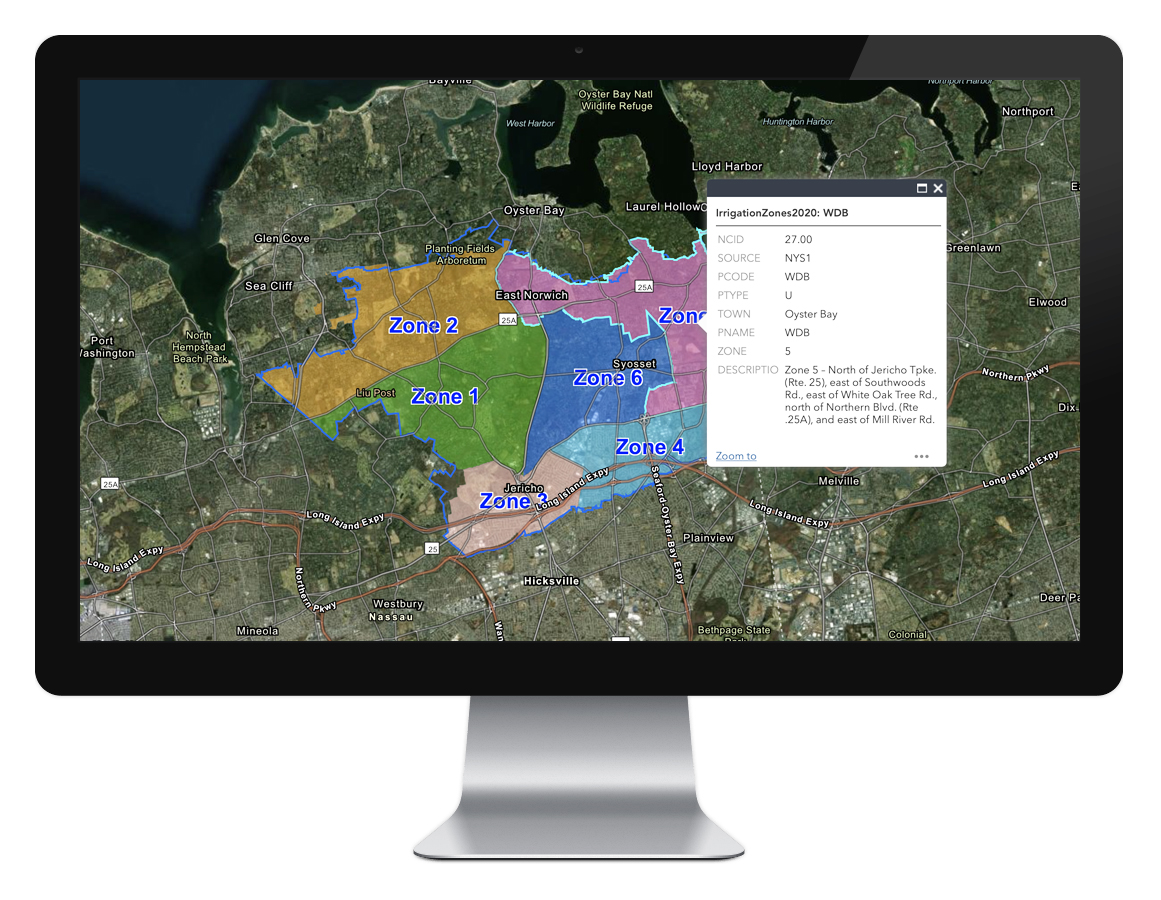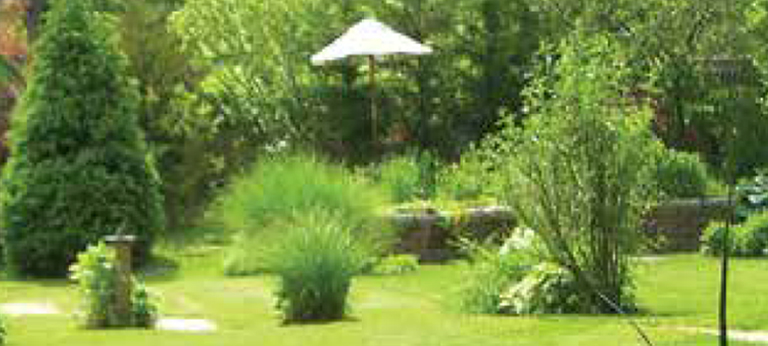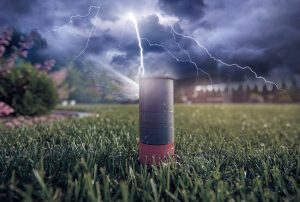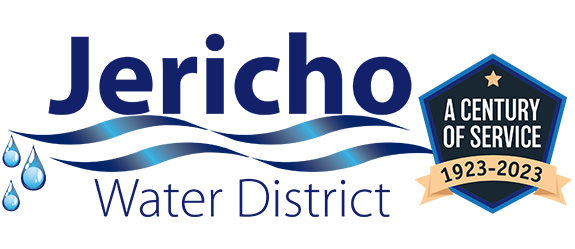Irrigation
Attention: New Sprinkling Regulations in Effect
 Summer irrigation quadruples average monthly water demand. In order to meet the water needs of all our communities, summer irrigation demand must be reduced, especially at peak hours. Therefore, water conservation is a must. This plan is in effect permanently for this lawn sprinkling season and going forward for future years.
Summer irrigation quadruples average monthly water demand. In order to meet the water needs of all our communities, summer irrigation demand must be reduced, especially at peak hours. Therefore, water conservation is a must. This plan is in effect permanently for this lawn sprinkling season and going forward for future years.
Nassau County Lawn Watering Ordinance 248-A 1987

- Sprinkling is prohibited before April 1 and after November 1.
- Sprinkling is prohibited between the hours of 10:00am and 4:00pm.
- Residents with even numbered and unnumbered residences may only water on even dates.
- Residents with odd numbered residences may only water on odd dates.
- Sprinkling is prohibited during periods of rainfall.
- Hoses must have a shut-off nozzle that is automatically self-closing, requiring hand pressure on the valve to permit the flow of water.
Common Sense Water Conservation Ideas for Landscaping
Try these simple steps:
- Irrigation is only intended to supplement precipitation. Even though irrigation is allowed as of April 1, hold off on initiating irrigation until it is actually needed.
- How much water your lawn requires depends on whether it is in full sun or shade, on sloped terrain or on relatively level ground, and the time of year. Generally, in May and October your lawn only needs 1/2 inch to 1 inch of water per week. From June through September, weekly needs may increase to 2 inches.
- Make sure that your sprinkler’s time clock is adjusted accordingly and program each zone based on plant requirements, soil type and sun/shade exposure. Electrical storms can cause power outages which disrupt time clock programming and may cause sprinklers to be on more frequently and/or for longer lengths of time. Check sprinkler time clock settings frequently to ensure they are set according to schedule.
- Irrigation is most effective when there is less evaporation (early morning and/or late afternoon and evening) so your lawn gets full value from watering. We recommend sprinklers be programmed to go on later in the morning, 6:00am to 10:00am., or at night, 9:00pm to 12:00am.
- Sprinkler systems are prone to leaks that largely go unnoticed and can waste thousands of gallons of water. To mitigate this problem, systems should be inspected monthly. Walk your property to check for broken lines and heads, clogged heads or heads blocked by new plant growth. Also look for areas that are always wet or areas that are very green. These are signs that more water is being sent to those areas.
- There is a lot you can do to make your soil healthier so it can take full advantage of the water being delivered to it and minimize the use of fertilizers and pesticides. Test soil pH annually. Soil with a 6.2 to 6.5 pH is more drought and disease resistant. Applying lime will adjust the pH accordingly. Adding compost increases the soil’s capacity to retain water. Lawns aerated annually have a greater capacity to absorb water and applied nutrients.
Review more information about irrigation and sprinklers on our In-Ground Sprinklers page.
Lightning Strikes and Sprinkler Systems
 Each summer, our area receives its fair share of thunderstorms with accompanying bolts of lightning. Lightning strikes can cause electrical surges, which could possibly damage your homes electrical system. Whether direct or nearby, these strikes can also do considerable damage to your automatic sprinkler systems and pool electrical components. Traveling underground and following the copper wiring for the control system, which includes the solenoid valves and the programable time clock, the lightnings energy can impair those components. While some of the damage to the system may be obvious, it is that damage which is not readily apparent that can cause the greatest waste of water. To avoid this contingency, sprinkler operation should be checked after each storm.
Each summer, our area receives its fair share of thunderstorms with accompanying bolts of lightning. Lightning strikes can cause electrical surges, which could possibly damage your homes electrical system. Whether direct or nearby, these strikes can also do considerable damage to your automatic sprinkler systems and pool electrical components. Traveling underground and following the copper wiring for the control system, which includes the solenoid valves and the programable time clock, the lightnings energy can impair those components. While some of the damage to the system may be obvious, it is that damage which is not readily apparent that can cause the greatest waste of water. To avoid this contingency, sprinkler operation should be checked after each storm.
The operation of the control box, which houses the programable timer and is the “brains” of your system, may be disrupted if the power to your home goes out. This will result in your sprinkler system possibly not turning on at all, allowing your system to run more frequently than originally programmed, or even running at different times during the day. Simply unplugging the controller, waiting approximately 30 seconds and then plugging it in again, may resolve the problem. If it does not, and the sprinkler system is running constantly, you may have to shut it off at the main valve for the system. If this happens, contact the company that maintains your sprinkler system.
Observing your system while it is on is an excellent way to check for leaking valves and broken sprinkler heads. If you notice soggy areas, or areas that are exceptionally green, this may be the result of a broken or leaking underground pipe in the sprinkler system.


